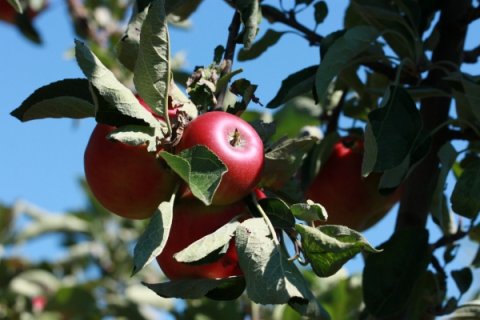EURAF Produced four Policy Briefings between May and July.
Briefing 15 - Monitoring Trees Outside Forests in the EU (May)- responded to a Call for Evidence leading to an new EU Regulation titled “Framework for Forest Monitoring and Strategic Plans”. We agreed with the Commission's view that “forests play a key role in responding to climate change, preserving and restoring biodiversity and developing the bio-economy, especially in rural areas. However, information is patchy about the status of forests in the EU, their social, ecological and economic value, and the pressures they face and ecosystem services they provide. Since 2007, when the Forest Focus Regulation expired, there have been no harmonised EU forest reporting requirements. There is consequently no comparable and consistent information on the status of forests in the EU”. We pointed out a) that, which “Forest Europe” (2020) have done their best, using FAO-FRA data provided by Member States, to report on the status of European forests, comparisons have proven difficult due to major inconsistencies and gaps; and b) the environmental and climate change importance, stressed above for forests, also applies to Trees Outside Forests (ToF), but this vital resource is extremely inconsistently reported.
Briefing 16 - Agroforestry for the Green Deal transition (June) - provided easy access to the abstracts of presentations and posters given at the Sixth European Agroforestry Conference in Nuoro Sardinia from 16-20th May 2020. These have been collated into 4 TOPICS and 13 SUBTOPICS. Most of the abstracts are relevant to the European Green Deal, and to a range of agricultural, forestry and environmental policies in the EU and globally. To see the recorded oral presentations and full book of abstracts, readers should go to the conference link.
Briefing 17 - Agroforestry and the revised LULUCF Regulation (June) - was produced to help persuade MEPs not to remove the commitment made by the Commission to report emissions in a single integrated land use pillar (AFOLU - Agriculture, Forestry and Other Land Use). This would have ended artificial distinction between forestry and agriculture in current emissions reporting procedures (Figure 1). Agroforestry bridges agriculture and forestry and EURAF has campaigned against this distinction since 2006. Furthermore, we lobbied to retain the Commission's commitment to emissions-neutrality by 2035 across the whole AFOLU sector. EURAF was disappointed that Parliament did not take our advice, BUT we were pleased that the word agroforestry was included three times in successful amendments to Regulation. We also noted that Council, at the end of June, agreed that “.. the Commission would submit a report within six months of the first global stocktake under the Paris Agreement (to be carried out in 2023), on including non-CO2 greenhouse gas emissions from agriculture in the scope of the regulation and the setting of post 2030 targets for the land use sector.”

(Figure 1) A schema used by the European Commission DG CLIMA to explain that fluxes of all greenhouse gases from forestry and CO2 from agriculture are reported through LULUCF (shown in blue), whereas fluxes of non-CO2 GHG gases from agriculture are reported through the Emissions Sharing Regulation (shown in red). Since 2006 the IPCC has recommended that a single land use pillar should be used to report on all GHG emissions from “Agriculture, Forestry and Other Land Use (AFOLU)”
Briefing 18 - Agroforestry and the EU Nature Restoration Regulation - NRR (July) - welcomed the clarification given in the draft Regulation that “productive trees” are part of “high-diversity landscape features” mentioned in the CAP SP Regulation and the Biodiversity Strategy, but we were bewildered that this clarification was given only for landscape feature trees on arable land! The concept of “non-productive trees'' used in the Biodiversity Strategy and in this Regulation is bizarre, since a major justification for Trees outside Forests (ToF) is that they can give valuable timber, fodder and firewood production for farmers, while at the same time providing environmental and biodiversity benefits. The NRR also risks creating parallel indicators to those used in CAP Performance Monitoring and Evaluation Framework (PMEF) (e.g. R34 in the Result Indicator Fiches). EURAF was also worried that some of the “indicators” of high forest diversity were applicable only to some forests. For example, a requirement to maintain high volumes of standing deadwood and lying deadwood - should surely not be applied in areas with medium or high fire risk.
Gerry LAWSON












